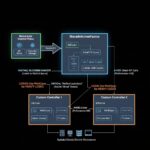
Introduction: Embracing Innovation in IT
In today’s ever-evolving IT landscape, staying ahead of the curve is essential for driving operational excellence and delivering exceptional user experiences. As technology continues to advance at a rapid pace, businesses are increasingly seeking innovative solutions to optimize their data processing infrastructure. In this pursuit, the integration of Kubernetes Event-Driven Autoscaling (KEDA) with Kafka has emerged as a game-changing strategy for enhancing performance, scalability, and efficiency.
Understanding the Need for Scalability in Data Processing
The Demand for Dynamic Workload Management
The IT industry operates in a dynamic environment characterized by fluctuating workload demands. With data volumes surging and user interactions intensifying, the ability to dynamically manage workloads in real time is crucial for ensuring optimal system performance. Traditional static resource allocation models often fall short in meeting these evolving demands, prompting the need for a more agile and responsive approach.
The Rise of Kafka and Its Performance Challenges
Kafka, renowned for its real-time data processing capabilities, has become a cornerstone of modern IT infrastructure. However, as data volumes soar and usage patterns become more unpredictable, Kafka clusters often encounter performance bottlenecks during peak loads. Addressing these challenges requires a solution that can adapt to varying workload conditions and scale resources dynamically to match demand.
KEDA-Kafka Integration: A Revolutionary Approach to Performance Optimization
Introducing Kubernetes Event-Driven Autoscaling (KEDA)
KEDA, an advanced autoscaling tool designed for Kubernetes environments, offers a transformative solution for dynamically adjusting resource allocation based on workload metrics. By leveraging KEDA’s event-driven architecture, IT teams can seamlessly integrate Kafka with Kubernetes, enabling automated scaling of Kafka resources in response to fluctuating data processing requirements.
Realizing the Potential: Enhancing Kafka Performance
Through the seamless integration of KEDA with Kafka, IT organizations can unlock the full potential of their data processing infrastructure. By harnessing KEDA’s autoscaling capabilities, businesses can achieve significant performance improvements, particularly during peak loads. The ability to dynamically scale Kafka resources ensures that system performance remains optimal, effectively mitigating performance bottlenecks and enhancing overall operational efficiency.
Success Story: A 62.15% Performance Improvement
In a compelling demonstration of the power of KEDA-Kafka integration, a recent case study revealed a remarkable 62.15% improvement in Kafka performance during peak loads. This success story serves as a testament to the tangible impact of leveraging KEDA’s autoscaling capabilities in real-world IT environments. By embracing this innovative approach, organizations can achieve substantial performance gains and deliver superior user experiences under varying workload conditions.
Embracing a Future-Ready Approach
Elevating Operational Efficiency with KEDA
The collaboration between KEDA and Kafka represents a significant leap forward in optimizing data processing infrastructure. By adopting this future-ready approach, IT teams can effectively manage dynamic workloads, enhance system scalability, and drive operational efficiency. The seamless coordination between Kubernetes-driven autoscaling and Kafka’s robust data processing capabilities empowers businesses to meet the demands of a data-driven world with confidence.
The Path Ahead: Leveraging KEDA for Performance Transformation
As businesses continue to navigate the complexities of data-intensive environments, the integration of KEDA with Kafka promises unparalleled opportunities for performance transformation. With a focus on dynamic resource allocation and agile workload management, organizations can harness KEDA’s capabilities to propel their Kafka deployments to new heights of performance and scalability.
Conclusion: Charting a Course for Excellence
The synergy between KEDA and Kafka represents a pivotal shift in the realm of IT infrastructure management. By embracing innovation and leveraging the power of KEDA’s autoscaling capabilities, businesses can set a new standard for operational excellence and system performance. This collaborative approach transcends traditional limitations, enabling organizations to thrive in a data-centric world and deliver unparalleled experiences to their users.
In conclusion, the integration of Kubernetes Event-Driven Autoscaling with Kafka heralds a new era of performance optimization in the IT industry. By embracing dynamic workload management and leveraging the scalability offered by KEDA, businesses can carve a path toward operational excellence, driving impactful outcomes and setting the stage for success in a rapidly evolving digital landscape.
Reference to the Article : Kedify
Follow us for more Updates












